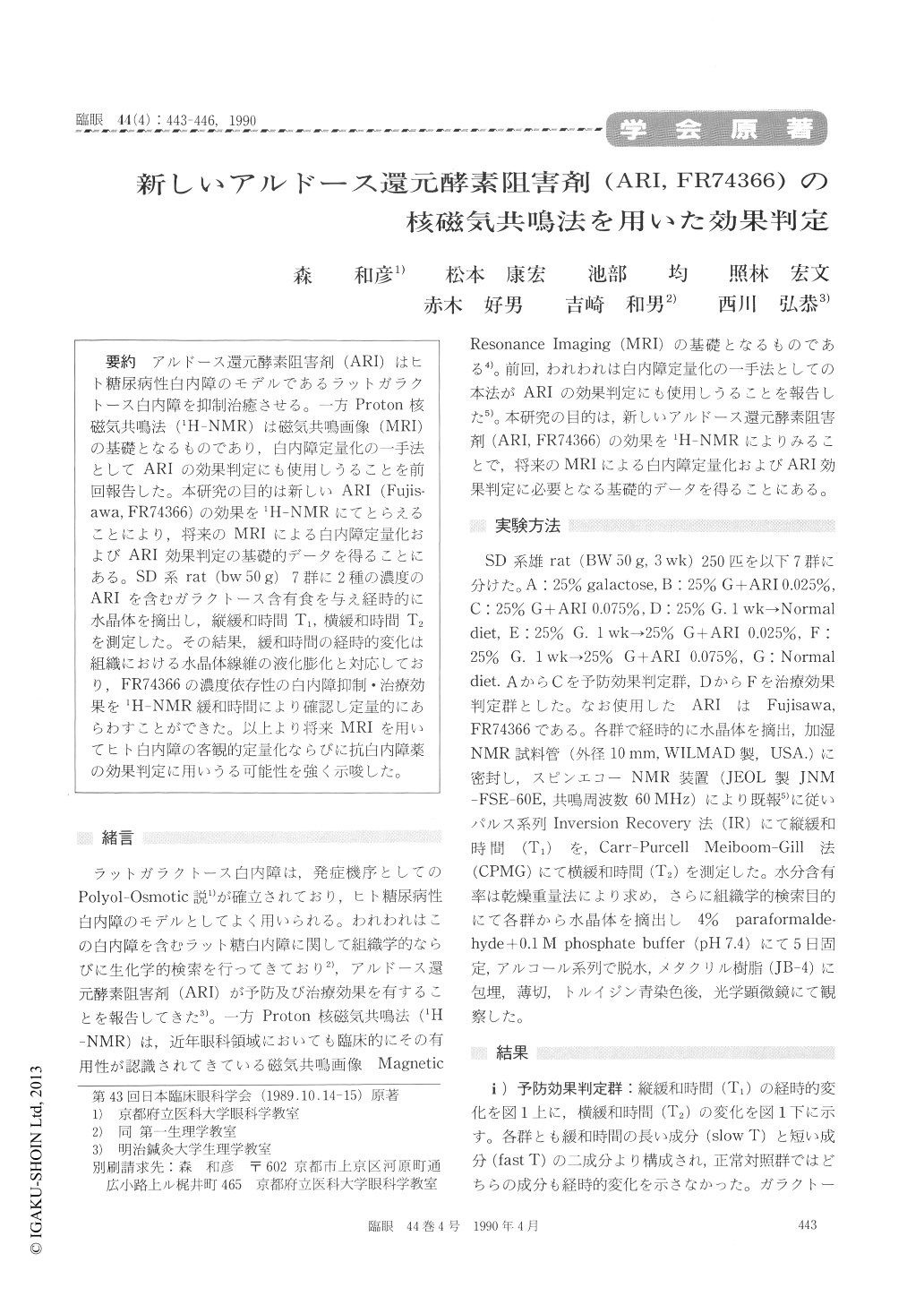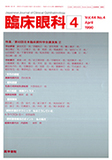Japanese
English
- 有料閲覧
- Abstract 文献概要
- 1ページ目 Look Inside
アルドース還元酵素阻害剤(ARI)はヒト糖尿病性白内障のモデルであるラットガラクトース白内障を抑制治癒させる。一方Proton核磁気共鳴法(1H-NMR)は磁気共鳴画像(MRI)の基礎となるものであり,白内障定量化の一手法としてARIの効果判定にも使用しうることを前回報告した。本研究の目的は新しいARI (Fujis-awa, FR74366)の効果を1H-NMRにてとらえることにより,将来のMRIによる白内障定量化およびARI効果判定の基礎的データを得ることにある。SD系rat (bw 50g)7群に2種の濃度のARIを含むガラクトース含有食を与え経時的に水晶体を摘出し,縦緩和時間T1,横緩和時間T2を測定した。その結果,緩和時間の経時的変化は組織における水晶体線維の液化膨化と対応しており,FR74366の濃度依存性の白内障抑制・治療効果を1H-NMR緩和時間により確認し定量的にあらわすことができた。以上より将来MRIを用いてヒト白内障の客観的定量化ならびに抗白内障薬の効果判定に用いうる可能性を強く示唆した。
Aldose reductase (AR) is involved in initiation of galactosemic cataract in rats. AR inhibitors may prevent and reverse the cataract. FR74366, a new AR inhibitor, was shown to be of value in prevent-ing and inducing regression of galactosemic cata-ract in rats when fed in concentrations of 0.025% or 0.075%. We employed the proton nuclear magnetic resonance, 1H-NMR, in quantitating the cataract, or turgence of the crystalline lens, in 250 male rats fed with either of 7 types of food containing normal diet, galactose and/or FR74366 in various concen-trations. The findings indicated that 1H-NMR is of value in quantitating the degree of lens opacity in galactosemic cataract.

Copyright © 1990, Igaku-Shoin Ltd. All rights reserved.


